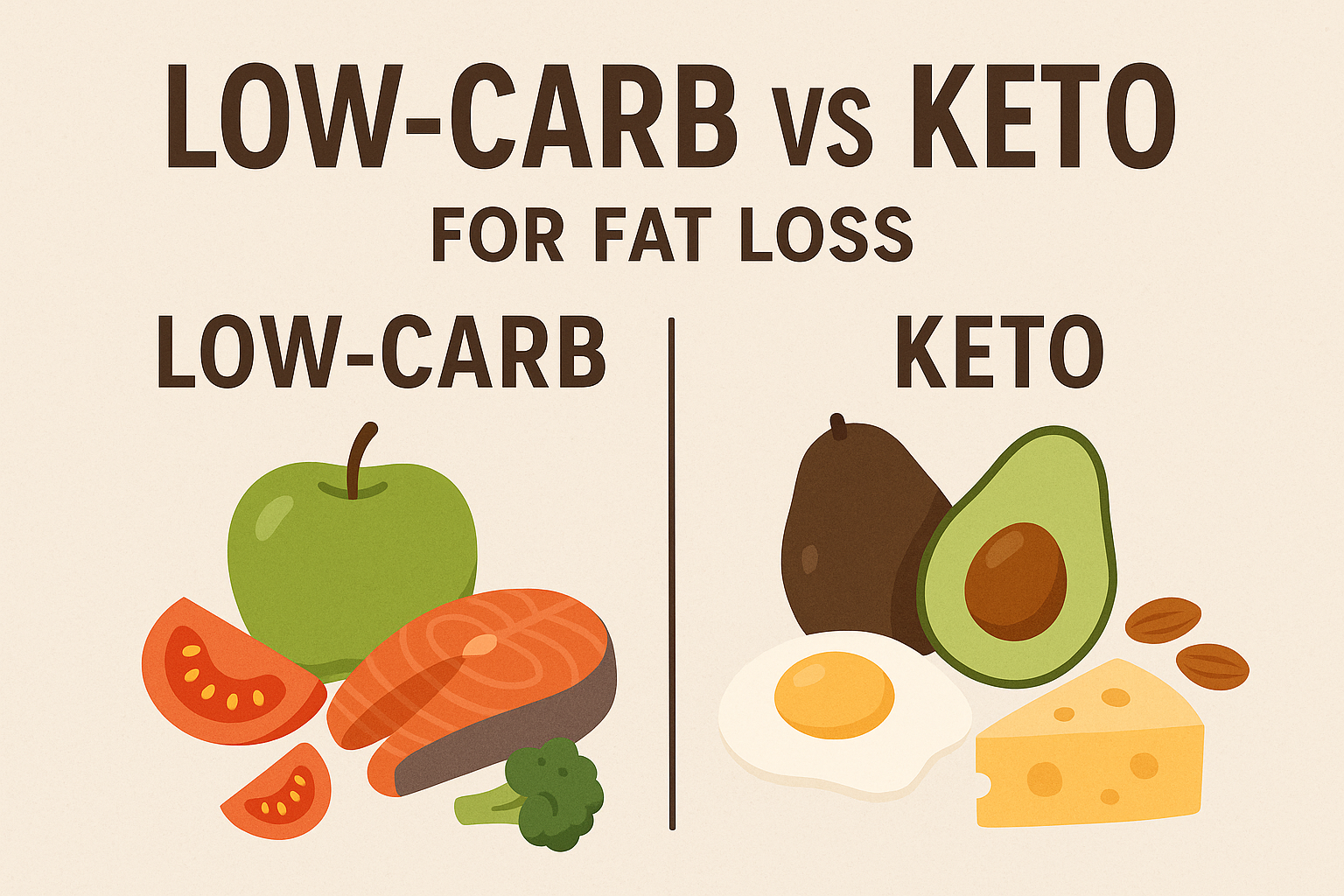Hypothyroidism affects millions of Americans, especially women. This condition slows down the thyroid gland’s function, impacting metabolism, energy, and weight. One of the most frustrating symptoms? Stubborn weight gain.
If you’re living with hypothyroidism and trying to lose weight, the process can feel slow and discouraging. But the good news? Weight loss is absolutely possible — with the right strategies tailored to your body.
In this article, we’ll walk you through everything you need to know to lose weight effectively and sustainably with hypothyroidism.
🧠 What is Hypothyroidism?
Hypothyroidism occurs when your thyroid gland doesn’t produce enough thyroid hormones (T3 and T4), which are crucial for metabolism, digestion, and energy.
Common Symptoms:
-
Fatigue
-
Weight gain
-
Cold intolerance
-
Depression or brain fog
-
Constipation
-
Hair thinning
-
Dry skin
It’s most often caused by Hashimoto’s thyroiditis, an autoimmune disorder, or iodine deficiency.

⚠️ Why Is It Hard to Lose Weight with Hypothyroidism?
-
Slower metabolism: Your body burns fewer calories at rest.
-
Water retention: You may hold onto fluids more easily.
-
Fatigue: Makes it harder to stay active and motivated.
-
Hormonal imbalances: Affect hunger and satiety hormones.
These challenges mean traditional weight loss plans might not work the same way — you need a specialized approach.
✅ 10 Strategies to Lose Weight with Hypothyroidism
1. Get Your Thyroid Meds Optimized First
Before focusing on fat loss, your doctor should:
-
Check your TSH, Free T3, and Free T4 levels.
-
Consider a combination of T4 (levothyroxine) and T3 therapy.
-
Test for Hashimoto’s antibodies (TPOAb).
👉 Unbalanced thyroid hormones can sabotage all weight loss efforts.
2. Eat a Nutrient-Dense, Anti-Inflammatory Diet
Avoid ultra-processed and inflammatory foods. Choose:
Do eat:
-
Lean proteins (chicken, turkey, fish)
-
Omega-3s (salmon, flaxseeds, walnuts)
-
Leafy greens, cruciferous veggies (in moderation)
-
Gluten-free whole grains (quinoa, oats)
-
Healthy fats (avocado, olive oil)
Avoid:
-
Refined carbs and sugars
-
Soy (can interfere with thyroid meds)
-
Gluten (many with Hashimoto’s have sensitivity)
💡 An anti-inflammatory diet can support immune health and weight balance.

3. Prioritize Protein
Protein supports metabolism, muscle repair, and satiety.
-
Aim for 20–30g of protein per meal
-
Great sources: eggs, Greek yogurt, tofu, beans, lean meat
High-protein diets have been linked to better fat loss, especially in those with metabolic disorders.
4. Don’t Fear Strength Training
Cardio is great — but building lean muscle is key to reversing metabolic slowdown.
Try:
-
Bodyweight exercises (push-ups, squats)
-
Resistance bands or dumbbells
-
3x a week, 20–30 minutes
Strength training burns fat, tones your body, and boosts resting metabolism.
5. Walk Daily for Fat Burn & Energy
If fatigue limits workouts, start with walking:
-
20–30 minutes/day
-
Low-impact and joint-friendly
-
Helps with insulin sensitivity and mood
Even light movement reduces stress and supports thyroid function.
6. Balance Blood Sugar
Unstable blood sugar spikes insulin, leading to fat storage.
Tips:
-
Eat small, balanced meals every 3–4 hours
-
Include protein + fiber + fat in every meal
-
Avoid sugary drinks and large carb-heavy meals
Balanced blood sugar = fewer cravings and less belly fat.
7. Improve Gut Health
Gut issues (bloating, constipation) are common in hypothyroidism.
Solutions:
-
Include probiotic-rich foods (yogurt, kimchi, kefir)
-
Take fiber: chia seeds, veggies, flax
-
Stay hydrated for smoother digestion
A healthy gut helps hormone balance, nutrient absorption, and weight control.
8. Reduce Stress
Chronic stress increases cortisol — a hormone that promotes belly fat and worsens thyroid function.
Manage stress with:
-
Meditation
-
Journaling
-
Yoga
-
Deep breathing
-
Nature walks
Even 10 minutes a day can help.
9. Prioritize Sleep
Aim for 7–9 hours of quality sleep. Poor sleep increases hunger hormones and weight gain risk.
Tips:
-
Stick to a sleep schedule
-
Limit screens before bed
-
Try magnesium-rich foods (almonds, spinach)
💤 Good sleep restores hormones and energizes your metabolism.
10. Track, Adjust, and Be Patient
Use a journal or app to:
-
Track food intake (calories, macros)
-
Monitor energy, mood, and symptoms
-
Identify what’s helping or hurting your progress
👉 Weight loss with hypothyroidism is slower, but consistent effort pays off.
🗓️ Sample Weekly Routine
| Day | Workout | Focus |
|---|---|---|
| Mon | 20-min walk + protein-rich meals | Hydration |
| Tue | Strength training (upper body) | High-fiber lunch |
| Wed | 30-min walk | Reduce gluten/sugar |
| Thu | Strength training (lower body) | Add probiotics |
| Fri | Gentle yoga | Digital detox |
| Sat | Rest + meal prep | Anti-inflammatory dinner |
| Sun | 40-min walk | Reflect + plan |
💬 Real-Life Inspiration
“I was diagnosed with hypothyroidism at 47. I used to feel exhausted and hopeless about my weight. But after optimizing my meds and switching to a high-protein, anti-inflammatory diet, I lost 35 pounds in 9 months — slowly but surely.”
— Lisa, 52, New Jersey✅ Final Thoughts
Weight loss with hypothyroidism is possible — but it requires a smarter, more compassionate approach:
🔹 Focus on healing, not restriction
🔹 Support your thyroid with nutrition and movement
🔹 Manage stress, rest well, and stay consistentWhether your goal is to lose 10 or 50 pounds, slow progress is still progress. Love your body through the journey — and it will thank you back.









